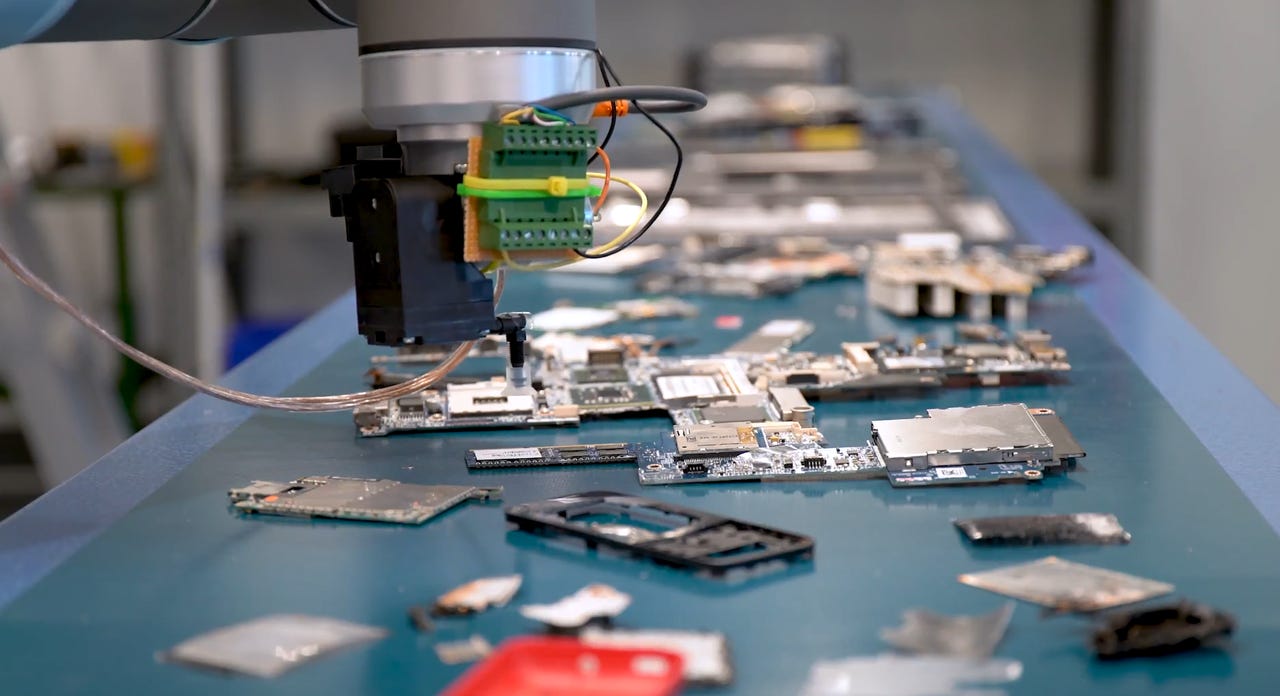UNSW launches 'world-first' e-waste microfactory


The University of New South Wales (UNSW) has launched what it calls the world's first e-waste microfactory in an effort to reduce Australia's electronic waste.
Following research at the university's Centre for Sustainable Materials Research and Technology (SMaRT Centre), the microfactory has been launched as the first in a series under development at UNSW that can turn consumer waste such as discarded smartphones and laptops into reusable materials.
According to UNSW, the microfactory has the potential to reduce Australia's vast amounts of e-waste causing environmental harm and offers an alternative to practices such as burning or burying e-waste.
"Our e-waste microfactory and another under development for other consumer waste types offer a cost-effective solution to one of the greatest environmental challenges of our age, while delivering new job opportunities to our cities but importantly to our rural and regional areas, too," said UNSW professor Veena Sahajwalla.
"These microfactories can transform the manufacturing landscape, especially in remote locations where typically the logistics of having waste transported or processed are prohibitively expensive," she added. "This is especially beneficial for the island markets and remote and regional regions of the country."
The microfactory is formed of separate modules through which waste materials are passed. Discarded devices, such as computers, phones, and printers, are first broken down, before being scanned by a robotic module for the identification of useful parts, which are then transformed into valuable materials using a controlled temperature process.
Computer circuit boards can be turned into valuable metal alloys such as copper and tin that can be used as metal components, the university said, while in another module, glass and plastic can be converted into micromaterials that can be used in industrial grade ceramics and plastic filaments for 3D printing.
UNSW's aim is to create initiatives for industry to take-up the technology, and is already in partnership with recycler TES and mining manufacturer Moly-Cop.
According to a United Nations University study, Oceania -- the region comprising Melanesia, Micronesia, Polynesia, and Australasia -- generated 0.9 million tonnes of e-waste as of 2014 and 15.2kg of e-waste per capita.
Asia generates the highest number of e-waste and is the largest consumer of electrical and electronic equipment, the study said. Singapore and Hong Kong are among the biggest dumpers of e-waste in the East and Southeast Asian region, generating 21.7kg and 19.95kg, respectively, per capita.
Between 2010 and 2015, e-waste grew by 63 percent to 12.3 million tonnes, the study added.
PREVIOUS AND RELATED COVERAGE
<="" p="" rel="follow">
- <="" p="" rel="follow"> <="" p="" rel="follow">
<="" p="" rel="follow">
<="" p="" rel="follow"> <="" p="" rel="follow">Brazil leads in e-waste generation in LatAm
The amount of electronic waste in the region is steadily growing and countries still lack specific regulations, says study.
Singapore e-waste programme lets consumers mail unwanted devices
Singtel and Singapore Post have teamed up to offer a recycling scheme that lets consumers mail their unwanted electronic devices or dispose them in bins placed at selected locations.
Singapore, Hong Kong among biggest e-waste dumpers in region
Hong Kong and Singapore in 2015 produced the highest volume of e-waste in the East and Southeast Asian region, generating 21.7kg and 19.95kg, respectively, per capita.
Mitsubishi Materials: Bring us your e-waste for recycling, we don't mind what it is
Japanese corporation Mitsubishi Materials' new recycling hub in the Netherlands is gearing up to receive e-waste from all over Europe.
The depressing truth about e-waste: 10 things to know(TechRepublic)
Where do our cell phones and laptops go to die? Here are 10 things to know about the growing electronic waste problem and how to properly recycle these items.